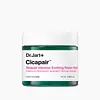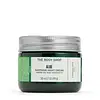What's inside
What's inside
 Key Ingredients
Key Ingredients

No key ingredients
 Benefits
Benefits

 Concerns
Concerns

 Ingredients Side-by-side
Ingredients Side-by-side

Water
Skin ConditioningDipropylene Glycol
HumectantPropanediol
SolventCaprylyl Methicone
Skin ConditioningVinyldimethicone
Niacinamide
SmoothingCetyl Dimethicone
EmollientTrehalose
Humectant1,2-Hexanediol
Skin ConditioningDimethiconol
EmollientCaprylyl Glycol
EmollientPullulan
Theobroma Cacao Extract
Skin ConditioningCentella Asiatica Leaf Extract
Skin ConditioningGlycerin
HumectantAllantoin
Skin ConditioningAsiaticoside
AntioxidantMadecassic Acid
Skin ConditioningAsiatic Acid
Skin ConditioningAdenosine
Skin ConditioningButylene Glycol
HumectantPolyglyceryl-4 Oleate
EmulsifyingSodium Stearoyl Glutamate
CleansingPalmitoyl Tripeptide-8
Skin ConditioningSodium Acrylate/Sodium Acryloyldimethyl Taurate Copolymer
Emulsion StabilisingAcrylates/C10-30 Alkyl Acrylate Crosspolymer
Emulsion StabilisingAmmonium Acryloyldimethyltaurate/Vp Copolymer
Dehydroxanthan Gum
Emulsion StabilisingTromethamine
BufferingPolyisobutene
Isopentyldiol
HumectantCaprylyl/Capryl Glucoside
CleansingSorbitan Oleate
EmulsifyingSodium Surfactin
CleansingDextrin
AbsorbentDextran
Disodium EDTA
CI 42090
Cosmetic ColorantCI 19140
Cosmetic ColorantWater, Dipropylene Glycol, Propanediol, Caprylyl Methicone, Vinyldimethicone, Niacinamide, Cetyl Dimethicone, Trehalose, 1,2-Hexanediol, Dimethiconol, Caprylyl Glycol, Pullulan, Theobroma Cacao Extract, Centella Asiatica Leaf Extract, Glycerin, Allantoin, Asiaticoside, Madecassic Acid, Asiatic Acid, Adenosine, Butylene Glycol, Polyglyceryl-4 Oleate, Sodium Stearoyl Glutamate, Palmitoyl Tripeptide-8, Sodium Acrylate/Sodium Acryloyldimethyl Taurate Copolymer, Acrylates/C10-30 Alkyl Acrylate Crosspolymer, Ammonium Acryloyldimethyltaurate/Vp Copolymer, Dehydroxanthan Gum, Tromethamine, Polyisobutene, Isopentyldiol, Caprylyl/Capryl Glucoside, Sorbitan Oleate, Sodium Surfactin, Dextrin, Dextran, Disodium EDTA, CI 42090, CI 19140
Water
Skin ConditioningPropanediol
SolventGlycerin
HumectantCaprylic/Capric Triglyceride
MaskingButylene Glycol
HumectantCoco-Caprylate/Caprate
EmollientGlyceryl Stearate Citrate
EmollientMyristyl Myristate
EmollientElaeis Guineensis Oil
EmollientOctyldodecanol
EmollientSesamum Indicum Seed Oil
EmollientSqualane
EmollientButyrospermum Parkii Butter
Skin ConditioningCetearyl Alcohol
EmollientCetyl Alcohol
EmollientPhenoxyethanol
PreservativeCaprylyl Glycol
EmollientAloe Barbadensis Leaf Juice Powder
Skin ConditioningAcrylates/C10-30 Alkyl Acrylate Crosspolymer
Emulsion StabilisingSodium Gluconate
Skin ConditioningCentella Asiatica Leaf Extract
Skin ConditioningXanthan Gum
EmulsifyingSodium Hydroxide
BufferingCitric Acid
BufferingWater, Propanediol, Glycerin, Caprylic/Capric Triglyceride, Butylene Glycol, Coco-Caprylate/Caprate, Glyceryl Stearate Citrate, Myristyl Myristate, Elaeis Guineensis Oil, Octyldodecanol, Sesamum Indicum Seed Oil, Squalane, Butyrospermum Parkii Butter, Cetearyl Alcohol, Cetyl Alcohol, Phenoxyethanol, Caprylyl Glycol, Aloe Barbadensis Leaf Juice Powder, Acrylates/C10-30 Alkyl Acrylate Crosspolymer, Sodium Gluconate, Centella Asiatica Leaf Extract, Xanthan Gum, Sodium Hydroxide, Citric Acid
 Reviews
Reviews

Ingredients Explained
These ingredients are found in both products.
Ingredients higher up in an ingredient list are typically present in a larger amount.
Acrylates/C10-30 Alkyl Acrylate Crosspolymer is a synthetic polymer. It is used to thicken and improve the texture of products. Due to its properties, it can prevent water and oil ingredients from separating.
Butylene Glycol (or BG) is used within cosmetic products for a few different reasons:
Overall, Butylene Glycol is a safe and well-rounded ingredient that works well with other ingredients.
Though this ingredient works well with most skin types, some people with sensitive skin may experience a reaction such as allergic rashes, closed comedones, or itchiness.
Learn more about Butylene GlycolCaprylyl Glycol is a humectant and emollient, meaning it attracts and preserves moisture.
It is a common ingredient in many products, especially those designed to hydrate skin. The primary benefits are retaining moisture, skin softening, and promoting a healthy skin barrier.
Though Caprylyl Glycol is an alcohol derived from fatty acids, it is not the kind that can dry out skin.
This ingredient is also used as a preservative to extend the life of products. It has slight antimicrobial properties.
Learn more about Caprylyl GlycolCentella Asiatica Leaf Extract comes from the leaves of an herb plant native to Southeast Asia. Centella Asiatica is rich in antioxidants and amino acids. It can help reduce irritation and soothe the skin.
Many active components found in centella asiatica, such as Madecassic Acid and Asiaticoside, encourage the skin to naturally produce hyaluronic acid. This helps keep our skin hydrated. Many of these components also show antioxidant activity and may help reduce the signs of aging.
Research shows centella asiatica can help increase Type I collagen production by increasing fibroblast production. Fibroblast helps form connective tissue.
The combination of all these properties makes centella asiatica leaf extract effective at soothing the skin.
Other components of centella asiatica leaf extract include Vitamin A, vitamin C, several B vitamins, and Asiatic Acid.
Recent studies found madecassoside may help prevent damage from UV rays by preventing UV-induced inflammation. Further research is needed.
This plant has been used as a medicine and in food for many centuries. As a medicine, it is used to treat burns, scratches, and wounds.
Learn more about Centella Asiatica Leaf ExtractGlycerin is already naturally found in your skin. It helps moisturize and protect your skin.
A study from 2016 found glycerin to be more effective as a humectant than AHAs and hyaluronic acid.
As a humectant, it helps the skin stay hydrated by pulling moisture to your skin. The low molecular weight of glycerin allows it to pull moisture into the deeper layers of your skin.
Hydrated skin improves your skin barrier; Your skin barrier helps protect against irritants and bacteria.
Glycerin has also been found to have antimicrobial and antiviral properties. Due to these properties, glycerin is often used in wound and burn treatments.
In cosmetics, glycerin is usually derived from plants such as soybean or palm. However, it can also be sourced from animals, such as tallow or animal fat.
This ingredient is organic, colorless, odorless, and non-toxic.
Glycerin is the name for this ingredient in American English. British English uses Glycerol/Glycerine.
Learn more about GlycerinPropanediol is an all-star ingredient. It softens, hydrates, and smooths the skin.
It’s often used to:
Propanediol is not likely to cause sensitivity and considered safe to use. It is derived from corn or petroleum with a clear color and no scent.
Learn more about PropanediolWater. It's the most common cosmetic ingredient of all. You'll usually see it at the top of ingredient lists, meaning that it makes up the largest part of the product.
So why is it so popular? Water most often acts as a solvent - this means that it helps dissolve other ingredients into the formulation.
You'll also recognize water as that liquid we all need to stay alive. If you see this, drink a glass of water. Stay hydrated!
Learn more about Water